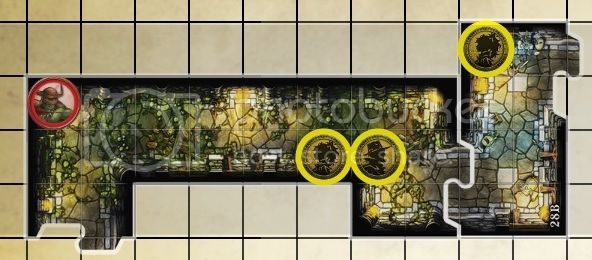This question is directed to those that have experience playing the co-ops. The questions are general in nature, and do not have a specific co-op and/or tile in mind.
Monsters have new movement categories in co-ops. I would like to discuss some of these, as during play, we have run into multiple situations where we were unsure what was intended, or what should have been done.
Toward : When a figure moves toward a target, the figure moves into the target’s space if possible. Otherwise, the figure must end its movement in the closest possible space to the target following normal movement rules. The figure always takes the route that requires the fewest movement points.
Most often, we assume that this means the monster moves adjacent to the hero, as a monster cannot occupy the same space as a hero (although there are some familiars that it could). Further, even if it could somehow occupy the same space as a hero, it can't attack from that space while doing so. We further assume that to move "toward" a target is to do so whether or not you will even be able to attack at all. For instance:
MEEEEHHEE M=Monster, E=Empty Space, H=Hero
EEEEEHEEE
If there is a corridor 2 squares wide, and heroes block both spaces (next to each other), and the target is behind the heroes (the farthest one), the monster moves towards that target even if it ultimately can't do anything.
Is this how you play it?
Now assume the following:
EEEEEEEEEE
MEEEEEHEEE M=Monster, E=Empty Space, H=Hero
EEEEEEHHEE
The monster is instructed to "Spot" the farthest hero. The monster has a movement of 3. Does the monster move towards the farthest hero, using the upper empty path to attempt to get LOS on the farthest hero, even though its speed will never actually allow him to achieve this goal?
In this case, does he actually do this fruitless effort, or does he instead, once again, just spot one of the nearest heroes, to which he already has LOS, and thus does not move?
How do you play it?
I have other questions, but they all basically fall under this same kind of category. If the monster has the ability to execute one of the special movement categories, but can't actually achieve the full value of the statement, does he do it?
Edited by any2cards
